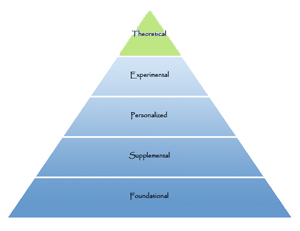Anti-Aging - Theoretical

Areas of Research
Now what are those highly funded areas in anti-aging research? Stem cell treatments continue to be a huge area of interest. Scientists are trying to find new ways to apply and get more out of it. One particular study was able to extend the lifespan of labratory mice by 3 times! It was just achieved this year, so getting similar results in human models remains to be seen (which puts us 80 or so years out with the help of game volunteers). We’re also seeing compelling studies with the use of iPS cells (Induced pluripotent stem cells) which is a very effective form of stem cells for therapeutic purposes. However, research is still limited on its long-term effectiveness. It’s been suggested that 1 cause of aging is that our stem cells age and are unable to mobilize into other types of tissue as needed. In a recently published study, scientists have isolated a protein that causes stem cell aging. They were able to use an experimental drug to inhibit this protein and rejuvenate the older cells. All in all, lots of promise with stem cell research.
The sharp guys at Stanford recently report a very exciting discovery. They have isolated the blood factors that cause aging. The ramifications of this finding are huge. If scientists found a way to inhibit these blood factors, it can reverse aging – just as it did for old mice in the study. I find this so intriguing, and it’s inspired my own personal follow-up research.
Another topic of research is cellular scenescense. What researchers are finding is when an aged cell is no longer able to divide, there can be problems with the programmed cell death. Instead, these scenescent cells cause issues for the other cells in our bodies, leading to cancer and other forms of disease. The research team is testing a drug that optimizes scenescense to clean up these old cells. Certain supplements available today such as modified citrus pectin (MCP) and trehalose are believed to have this effect, but more research is needed for the potential role that these therapies can play in an anti-aging program.
The Human Genome Project gave us deep insights into human genetics. And now, computing power is at the point where private companies are offering Whole Genome Sequencing. Imagine … having this technology within reach for use in personalized medicine. The technology is still maturing as more DNA sequences are identified that can be interpreted and translated into clinical applications. Early successes have been found in helping individuals with hard to treat terminal illnesses. The cost has markedly dropped from $100M in 2001 to a mere $10K in 2012, and is still on the decrease! Illumina is 1 pioneering company in this field. Their service includes an iPad app for physicians allowing them to drill down and view your individual sequences for the development of treatment options. Interpreting the results may require the help of a medical geneticist. Within most people's reach is the genetic testing offered by 23andMe. While the FDA has limited them to ancestry reports, you can actually take the raw data and run it through an independent service such as Promethease to get a great genetic report covering things like genetic traits and disease risk.
Following the completion of the Human Genome Project, the Human Microbiome Project (HMP) is an exciting, new mega project with an emphasis on mapping the microbes that inhabit the human body. “Foreign” microbes within our bodies outnumber our cells 10 to 1! Most of these microbes are part of the flora that live in our gut, but is also found elsewhere on our bodies such as our skin and mouth. In fact, a new way to characterize our bodies with respect to our gut flora is taking form, a classification known as enterotype. It’s not yet clear how this knowledge can help with diagnosis and treatments.
Industry Players
Life Extension is 1 of the main anti-aging organizations and has been around since 1980. Most of what they offer are natural supplements that help with different anti-aging goals. They also have a research arm which their line of supplements are based on. The body of knowledge they carry is immense. I highly recommend following their daily news if you’re interested in keeping up with the latest in medical research.
No A-list of anti-aging experts would be complete without the SENS Foundation and its founder, Aubrey de Grey. His claim to fame is identifying many of the causes of aging, which was largely covered in Part 1 of this blog. Today the work of de Grey and the SENS Foundation is leading in the direction of “rejuvenation biotechnologies” as they call it. Speaking of obscure terminology, SENS stands for ”Strategies for Engineered Negligible Senescence”. But make no mistake … his over-the-top verbosity is as impressive as his research contributions.
The final big-hitter in my book is A4M (or The American Academy of Anti-Aging Medicine). As opposed to Life Extension which focuses on supplements, A4M’s focus is on medical treatments towards the advancement of anti-aging. They hold conventions geared to the medical/ science community with some of the most prominent experts in their field presenting new information. While these conventions are not available to the general public, they have a great news section which is publicly available (at the link provided).
Wrap-Up
Well this brings us to the end of the Anti-Aging blog. You can expect this to be a living blog with minor updates made as new research studies are published. To sum things up, we’ve addressed almost all of the aging factors … a nutritious, organic diet and supplements to support overall health, infrared saunas for detox, earthing for inflammation, and other tools to address the factors of aging.
And we’ve established an anti-aging pyramid that incorporates a roadmap with a logical progression (the biggest considerations being nutrition, medical support, and toxins across the first 3 tiers).
